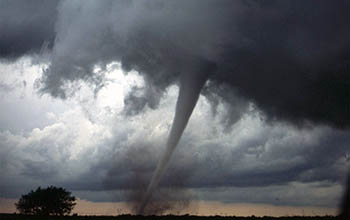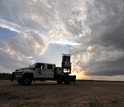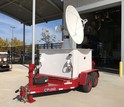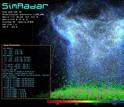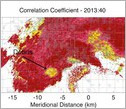News Release 17-041
Researchers develop radar simulator to characterize scattering of debris in tornadoes
Results could aid weather forecasters and emergency managers
May 1, 2017
This material is available primarily for archival purposes. Telephone numbers or other contact information may be out of date; please see current contact information at media contacts.
Find related stories on NSF's geosciences risk and resilience interest area at this link.
Researchers have developed the first numerical polarimetric radar simulator to study and characterize the scattering of debris particles in tornadoes. (See video)
The results of their study are published in the Institute of Electrical and Electronics Engineers (IEEE) journal Transactions on Geoscience and Remote Sensing.
"These results are important for operational weather forecasters and emergency managers," says Nick Anderson, program director in the National Science Foundation's (NSF) Division of Atmospheric and Geospace Sciences, which funded the research. "An improved understanding of what weather radars tell us about tornado debris can help provide more accurate tornado warnings and quickly direct emergency personnel to affected areas."
Current polarimetric radars, also called dual-polarization radars, transmit radio wave pulses horizontally and vertically. The pulses measure the horizontal and vertical dimensions of precipitation particles.
The radars provide estimates of rain and snow rates, accurate identification of the regions where rain transitions to snow during winter storms, and detection of large hail in summer thunderstorms.
But polarimetric radars have limitations the new research aims to address.
"With this simulator, we can explain in great detail to the operational weather community [weather forecasters] the tornadic echo from polarimetric radar," says Robert Palmer, an atmospheric scientist at the University of Oklahoma (OU) and co-author of the paper. Palmer is also director of the university's Advanced Radar Research Center. "The knowledge gained from this study will improve tornado detection and near real-time damage estimates."
Characterizing debris fields in tornadoes is vital, scientists say, because flying debris causes most tornado fatalities.
The researchers conducted controlled measurements of tornado debris to determine the scattering characteristics of several debris types, such as leaves, shingles and boards. The orientation of the debris, the scientists found, makes a difference in how it scatters and falls through the atmosphere -- and where it lands.
Additional co-authors of the paper include OU's David Bodine, Boon Leng Cheong (lead author), Caleb Fulton, Sebastian Torres, and Takashi Maruyama of the Disaster Prevention Research Institute at Japan's Kyoto University.
The paper's co-authors designed the field experiments in collaboration with atmospheric scientist Howard Bluestein of OU.
-NSF-
-
Atmospheric scientists collect rapid-scan data from a tornado in Texas in May, 2015.
Credit and Larger Version -
The scientists scan a possible tornado-producing supercell in Kansas at sunset.
Credit and Larger Version -
The researchers studied data, including debris signatures, from the 2013 EF5 tornado in Oklahoma.
Credit and Larger Version -
NSF-funded scientists developed a radar simulator that tracks debris in a simulated tornado.
Credit and Larger Version -
Image from the new rapid-scan, dual-polarization radar simulator, which can detect tornado debris.
Credit and Larger Version -
Scientists measure how radar signals change for the type, size and orientation of debris detected.
Credit and Larger Version
Media Contacts
Cheryl Dybas, NSF, (703) 292-7734, email: cdybas@nsf.gov
Jana Smith, University of Oklahoma, (405) 325-1322, email: jana.smith@ou.edu
The U.S. National Science Foundation propels the nation forward by advancing fundamental research in all fields of science and engineering. NSF supports research and people by providing facilities, instruments and funding to support their ingenuity and sustain the U.S. as a global leader in research and innovation. With a fiscal year 2023 budget of $9.5 billion, NSF funds reach all 50 states through grants to nearly 2,000 colleges, universities and institutions. Each year, NSF receives more than 40,000 competitive proposals and makes about 11,000 new awards. Those awards include support for cooperative research with industry, Arctic and Antarctic research and operations, and U.S. participation in international scientific efforts.
Connect with us online
NSF website: nsf.gov
NSF News: nsf.gov/news
For News Media: nsf.gov/news/newsroom
Statistics: nsf.gov/statistics/
Awards database: nsf.gov/awardsearch/
Follow us on social
Twitter: twitter.com/NSF
Facebook: facebook.com/US.NSF
Instagram: instagram.com/nsfgov

